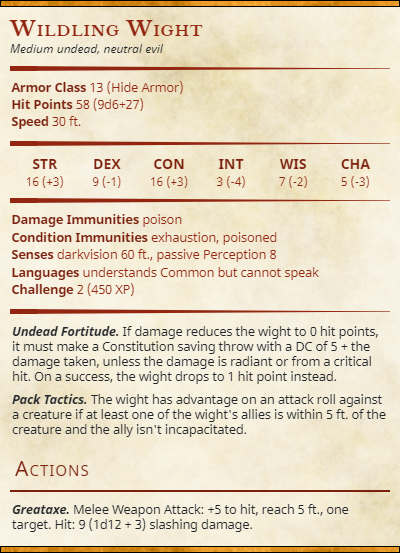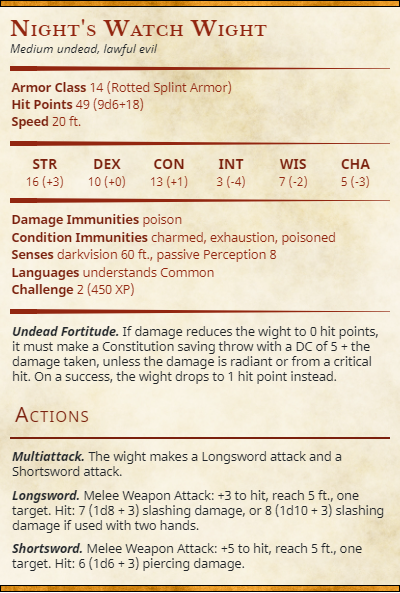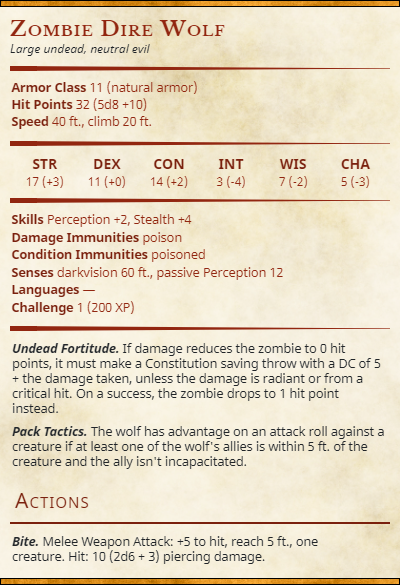So let’s talk about traveling in the wilderness. I should have put this at the beginning of the articles on the “sandbox” I suppose–but I didn’t think of it. So here it is at the end instead. One of the many things that bothered me about this adventure was that it included a “sandbox” without any kind of instructions or rules for how to deal with wilderness travel. Yet the placement of these locations is definitely not on any roads or major paths, according to the area map.
When this was released, only the Player’s Handbook had been published. The Dungeon Master’s Guide, which does have rules for wilderness travel, was still months in the future. I had the advantage of reading the adventure several years after publication, and I had already bought the three core rulebooks. Still, since the adventure itself doesn’t tell you how to handle this, I thought I would briefly summarize the DMG rules, as well as give you some interesting alternatives I’ve found.
Dungeon Master’s Guide and Player’s Handbook
Funny, the wilderness travel rules are kind of split between the DMG and the PH. The DMG offers two ways to handle wilderness travel: a cinematic narrated montage, or an hour-by-hour method (both are on page 106 of the DMG). The PH has rules about travel pace (page 181-182) and a list of activities PCs can perform while traveling (page 182-183.
Unfortunately the hour-by-hour method seems unnecessarily tedious…even old school hexcrawls didn’t go hour-by-hour! And the rules for wilderness survival, foraging, getting lost and so on are rather vague. There aren’t any clear procedures, steps, instructions, or anything like that. It doesn’t really tell you how to run this.
13th Age Travel Montage
Now if I were going to do a travel montage, I would probably rather use the kind used in 13th Age. Rather than being a simple narration by the DM, 13th Age travel montages are more interactive and collaborative. You start with a player who is good at improvising. You ask them to think of an obstacle, problem or challenge that the party experiences during their journey. Then you take Player 1’s response, turn to the next player and say “On your journey you encountered X problem/obstacle. Your character was instrumental in overcoming this obstacle/problem. How did you do that?” Once Player 2 has described how their character helped the party overcome the challenge, you ask Player 2 for another obstacle or event, and so it goes around the table until everyone has chosen a challenge and also narrated how their character succeeded in overcoming an obstacle or problem.
It’s a cool technique. However, it works best with an experienced group who is comfortable with improvising, coming up with creative ideas, and/or acting out what their characters do. A group of players who don’t know each other, who are new to D&D or a group of younger players may not know how to respond. They also might not like being in the spotlight, or feel pressured by the expectation. So this method isn’t for everyone.
Pointcrawl
This one is interesting. I’m not sure how long this has been around but I only discovered it recently. A pointcrawl is a way to present and track travel by established paths or routes, such as roads, rivers, herding paths, game trails, landmark chains, and so on. Instead of a detailed map, a pointcrawl represents major locations like settlements, large natural features, landmarks and adventure sites as boxes or nodes, with paths delineated between them. It ends up looking more like a flow chart, although some DMs will sketch in large natural features like mountains, hills, or what-have-you if they need a reminder for how the points of interest are positioned in relation to the large terrain elements. That can also be a reminder for what kinds of encounter tables to use during the journey. Here are some links to some articles with more information:
- Pointcrawls from the Hill Cantons blog
- Pointcrawls for Cities and Overland Travel in D&D from the Sly Flourish blog
- Pathcrawls (kind of a mashup of hexcrawl and pointcrawl) from Detect Magic
Hexcrawls
This is a big topic, and one that has been written about extensively elsewhere. So I won’t go into too much detail. I will say that as much as I love 5E, its wilderness travel rules are anemic. And they don’t really give you a process for running a proper hexcrawl. Tomb of Annihilation took a stab at providing actual hexcrawl rules and is supposed to be a hexcrawl adventure…but again, it doesn’t really provide you with concrete procedures for actually running a hexcrawl that isn’t a dreadful bore. There are lots of interesting locations, but not what you could call a proper key (the locations are all listed in alphabetical order instead of in an order that connects in some way to the actual map).
Hexcrawls are designed specifically for exploration, for areas where there are few (or no) paths established. You are exploring just to see what’s there, or to search for something that should be there, used to be there, or is rumored to be there. For more detailed information on hexcrawls, including procedures and tables and stuff, see the links below.
- The Alexandrian 5E Hexcrawl Series
- Welsh Piper’s Hex-based Campaign Design Series
- Ode to Black Dougal (This is very old and uses B/X D&D but can still be useful)
Applying This to LMoP
If you look at all the sandbox locations, only Conyberry is actually on/near a road. Thundertree is technically on a path (because you could start at Neverwinter and follow the river east to get there) but either you take the road to Neverwinter and then follow the river (which is much more lengthy), or you go overland (which might as well be hexcrawling because there is no discernible path). Old Owl Well is in the hills with no path or road marked on the map given. Wyvern Tor isn’t even on the map! Although I think the text mentions that it is south of Old Owl Well. Unless you made up some kind of path, both of those locations are wilderness as well.
So you have two locations relatively easy to find (though one is a much more lengthy journey if you take established paths). The other two are difficult to get to, and one of those two isn’t even marked on the map.
It’s hard to make a recommendation, because it’s really going to depend on both your preferences as a GM, and what your group of players find fun. If your players aren’t the exploring or completionist sort, you might be better off with a travel montage. You can always toss in an encounter or two if you think a narrative or collaborative montage would be boring for them. If you have players who are curious and exploratory sort, try a pathcrawl or hexcrawl. The links I’ve provided in this article should give you some solid information on how to run that. I especially recommend the Alexandrian, as Justin Alexander’s 5E Hexcrawl series is basically the material from his older Hexcrawl series, but adapted specifically to the 5E ruleset.
Well Gentle Readers, that’s it for this week. Next we’ll be diving into Revelation Lists, Secrets and Clues. Stay tuned!










